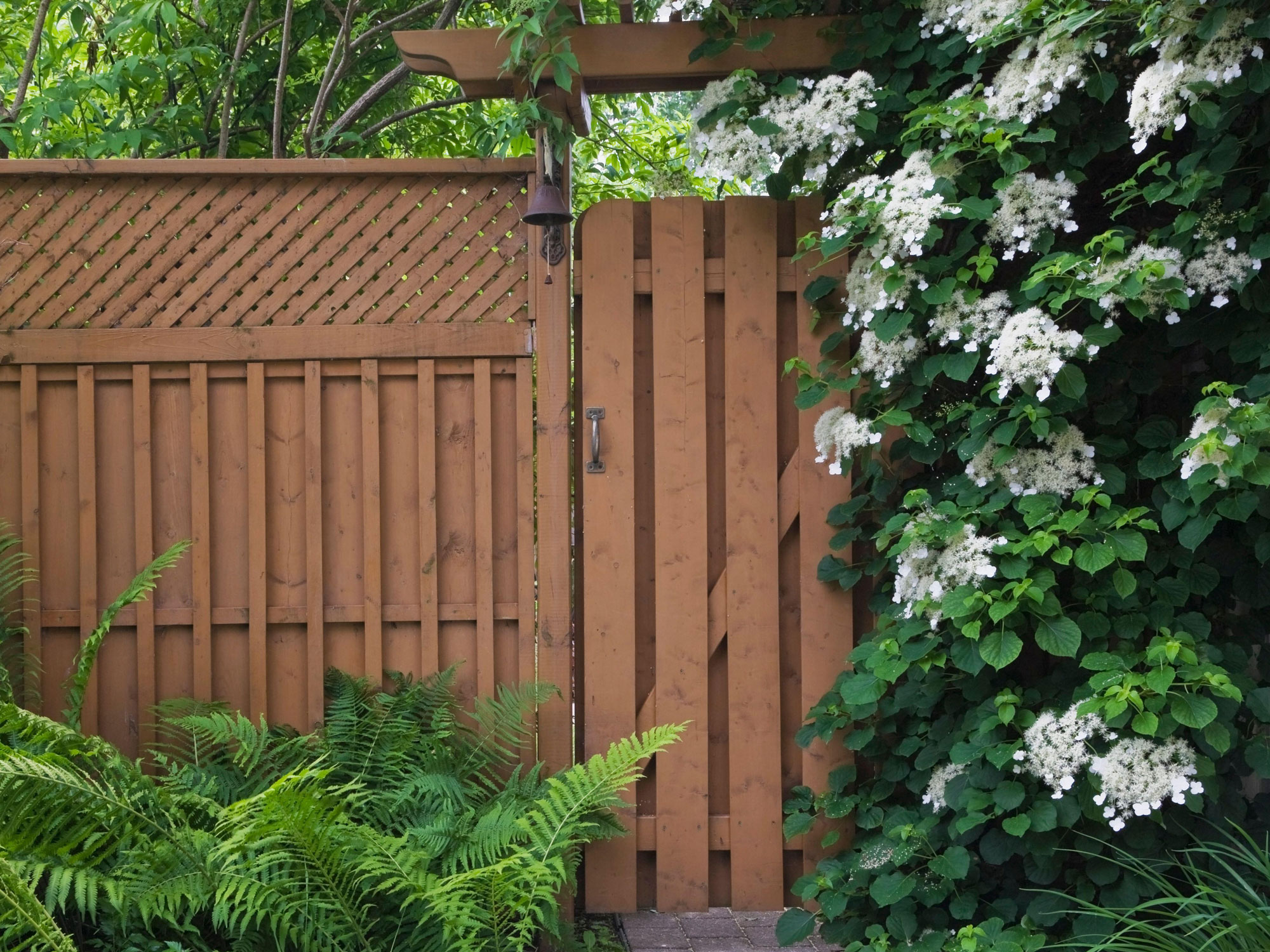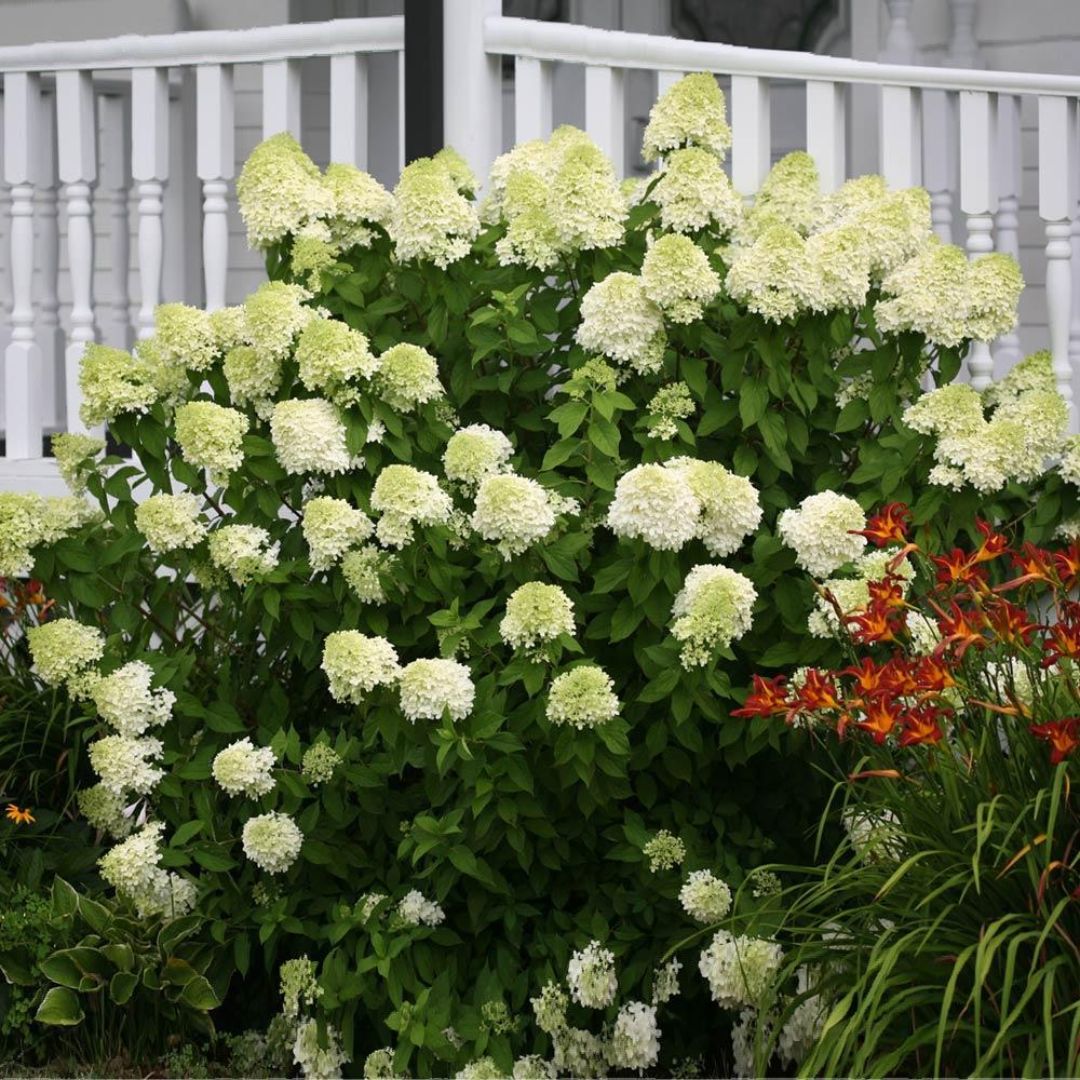Which Hydrangeas Grow Best in Shade? 6 Varieties That Thrive in Yards With Less Sunlight
Shade is often seen as a disadvantage because it limits the choice of plants you can grow but hydrangeas are very much the exception to the rule

When it comes to choosing the best hydrangeas for shade, the first thing to note is that most varieties prefer being in partial shade anyway. If your yard gets direct sunshine for a few hours a day this is known as partial shade. Hydrangeas do best in this type of dappled shade, where it's neither too sunny nor too shady.
The dream scenario for most hydrangeas is a mix of sun in the morning and shade in the afternoon. Hydrangeas that love these conditions include the bigleaf ones (H.macrophylla), as well as oakleaf hydrangea (H.quercifolia) and mountain hydrangea (H.serrata). Having said that, some varieties of hydrangea prefer to spend even more time in the shade, especially if you live in a warm climate. Hotter and drier weather conditions generally mean your hydrangea plants will need more shade, as they hate baking in the sun and wilt in hot weather.
Now find out more about why hydrangeas are sure to be a hit shady garden idea as you plan your planting, plus the varieties that have made it on to our shortlist to help you find the best hydrangeas for shade.
Which types of hydrangea can I plant in shade?

Hydrangeas can thrive in a bit of darkness. We've chosen a range to cover everything from climbing plants for shade to hydrangea to grow in containers.
Here are 6 shade-loving hydrangeas that will add color and foliage even in the shadiest of spaces.
1. Panicle hydrangea

Hydrangea paniculata varieties have cone-shaped blooms known as panicles. One of the most sought-after types in this category is 'Limelight', which certainly earns its name. The huge, showy pale lime-green flowers fade first to a soft white then a pretty pink. The blooms last for months and still look beautiful in winter even when they have faded.
'Hydrangea paniculata ‘Limelight’ is a bushy shrub that prefers full sun or partial shade,' says Susanna Grant author of Shade: Bloom Gardener's Guide (available on Amazon). 'In my garden, with just a few hours of afternoon light, it’s a much airier-looking plant, and I prefer it this way.'
The Livingetc newsletters are your inside source for what’s shaping interiors now - and what’s next. Discover trend forecasts, smart style ideas, and curated shopping inspiration that brings design to life. Subscribe today and stay ahead of the curve.
A snap to grow, this vigorous, dependable shade-loving shrub is a prolific bloomer that you can count on year after year to add a lovely luminous quality to shady spots. This variety will reach a height of around 8 feet and also thrives in a pot as a specimen plant as long as the pot is big enough. It can also be used to create an informal hedge to border a path.
Hardiness zone: 3-8
2. Climbing hydrangea

A great plant to cover a fence in shade, or a north-facing wall in city yards, the climbing hydrangea petiolaris can grow up to around 20 feet high. Once established it grows fast but is easy to control by lightly cutting it back once flowering has finished.
'This is one of the most sought-after climbers for its beautiful flowering cover,' says Rich Christakes, founder of the plant-based marketplace Ship My Plants. 'This hydrangea can thrive in areas with full sun, partial shade, or shade, making it a versatile choice for any landscape.'
The prolific white flowers of petiolaris varieties will lighten the gloom in any shady yard. It's a particularly good choice if you love the idea of the cool and classic color combo of green and white planting.
Hardiness zone: 4-9
3. Oakleaf hydrangea

Also known as hydrangea quercifolia, this variety has huge dark green leaves that turn gorgeous shades of red, bronze and purple in fall — it also makes the perfect colorful front yard plant. If you add some showy white blooms to the mix (lasting from midsummer right into late fall) and you have a real winner.
It's a great choice if you're looking for a shrub to fill out a shady corner in the yard as it works so well with everything else. Oakleaf hydrangeas don't need as much sun as other hydrangeas, which means they work well in an unloved northeast corner of your yard to create a focal point.
Look out for the 'Snow Queen' variety with its upright panicles that turn soft pink. The Royal Horticultural Society gave this one an Award of Garden Merit and the Pennsylvania Horticultural Society gave it a Gold Medal Award, and we think it doesn't get much better than that in terms of shining credentials.
Hardiness zone: 5-9
4. Smooth hydrangea

This variety of hydrangea really ticks the box, and its enduring popularity is for a good reason. 'Annabelle' is one of the loveliest hydrangea arborescens varieties to consider for your yard, with white pompom blooms that look like giant snowballs. It's what is known as a 'smooth' hydrangea variety, native to much of the southeastern United States, from the south of Illinois to northern Florida and from New York state to Oklahoma.
This variety loves the warm morning sun, but dislikes the heat of the afternoon. So the best place to plant it is in a sheltered location that provides morning sun and afternoon shade. Six hours of sunlight a day will help produce the best display of flowers, so study how the sun moves around your yard to determine the right spot before you plant it.
This is one hydrangea that won't thrive in a position that's in full shade, as this limits flower production. If you live in a hot climate you may see your plant wilt or even have sun scorch if not enough moisture or afternoon shade is provided. Knowing how to deadhead hydrangeas is essential if you do notice your blooms wilting away. It's also best to choose a partly shady border for this stunning variety.
Hardiness zone: 3-8
5. Bigleaf hydrangea

Also known as French hydrangea and hydrangea macrophylla, these flowers come in mophead varieties with large round blooms as well as lacecap varieties with flat clusters of tiny flowers. If you like a big hit of color this is a great choice of hydrangea to go for.
The ideal conditions to get the most flowers and healthiest foliage include moist well-drained soil in full sun to part shade. Give bigleaf types morning sunlight to bloom but too much sun and they may scorch. In areas with very hot summers (USDA zones 7 and warmer), a little afternoon shade will keep the foliage from frying.
'One of the bigleaf hydrangea trials that showed great performance from the start was 'Let’s Dance Can Do,' says Lorraine Ballato, author of Success With Hydrangeas: A Gardener’s Guide. 'Usually, it takes a hydrangea one season in my garden to acclimate and get its mojo. Not this one! It flowered from the first season it was planted and has been a stunner ever since. I have it planted in more shade than sun and still get flowers.'
Look out for cultivars in the 'Endless Summer' series too. For all your small garden ideas, these work well in tiny city yards and will thrive in patio containers too.
Hardiness zone: 5-9
6. Dwarf hydrangea

Most hydrangeas grow perfectly well in pots, although it's still a good idea to look out for dwarf varieties so you can keep them under control. Potted hydrangea care is essential so be sure not to place hydrangeas in pots in an area where they will dry out too quickly.
If you plant a hydrangea in a large container you can reposition it as necessary to stop your plant wilting when temperatures soar. Alternatively if yours is positioned in a sun trap but too heavy to move, cover it with an umbrella during hot spells to avoid shrivelled foliage and dry, papery flowers. Many hydrangeas are sold specifically for container gardening. They tend to be smaller and more compact varieties. Look out for small varieties that really deliver such as H. macrophylla ‘Mini Penny’ and H. paniculata ‘Little Lime’.
Water hydrangeas in containers regularly to make sure the compost doesn’t dry out, and keep the liquid feed coming throughout spring and summer for a long-lasting display of beautiful blooms.
FAQS
Why shade-loving hydrangeas will thrive in your yard

There are lots of positives about growing hydrangeas in shady spots. One of the main plus points is that although they tend to grow more slowly they have much sturdier growth and lots more lush foliage.
They will bloom for longer too, for months instead of weeks, when not exposed to the type of hot sunshine found in the south. The soil conditions in shade will tend to be much more favorable too. Hydrangeas like moist, well-drained soils and in shady spots conditions will tend to stay this way as it's protected from harsh sun.
As long as they get a regular hit of sunlight in the morning your hydrangea plants will be happy spending the rest of the day in the shade.
Lifestyle journalist Sarah Wilson writes about garden design and landscaping trends. She has studied introductory garden and landscape design, and also has an RHS Level 2 qualification in the Principles of Plant Growth and Development. She is a regular contributor to Livingetc.com, and also writes for Homes & Gardens, Country Living, Country Homes & Interiors, and Modern Gardens magazines. Her first job was at Elle magazine, during which time a trip to the beautiful La Colombe d'Or in St-Paul-de-Vence led to an interest in writing about all things botanical. Later as lifestyle editor at Country Homes & Interiors magazine one of the highlights were the run of captivating country gardens that were featured.





